CDN Basics
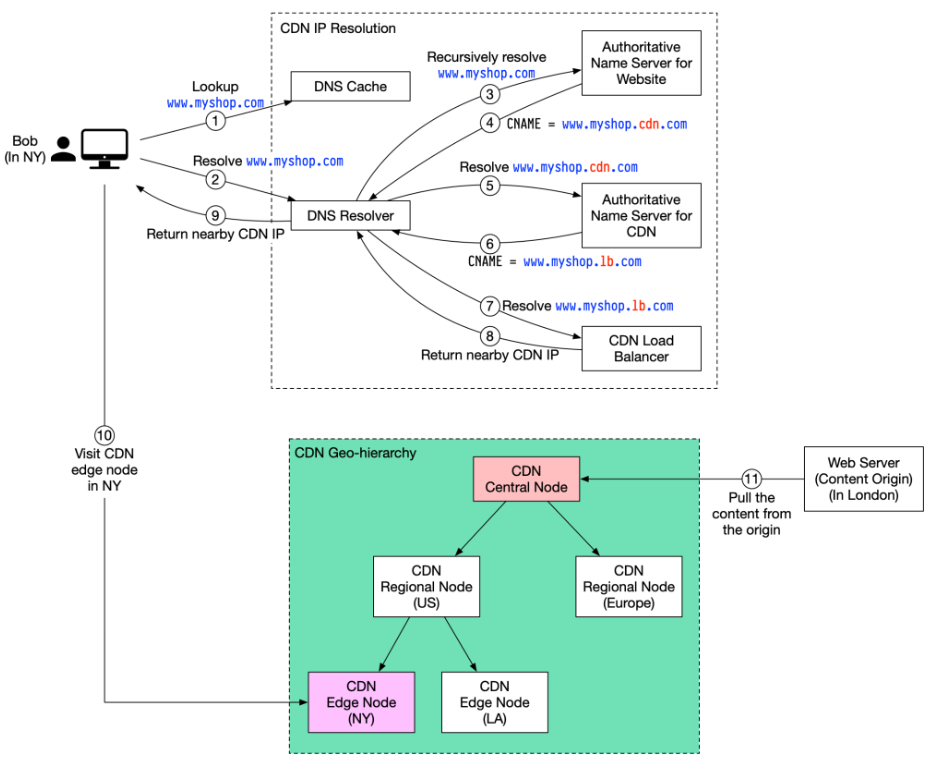
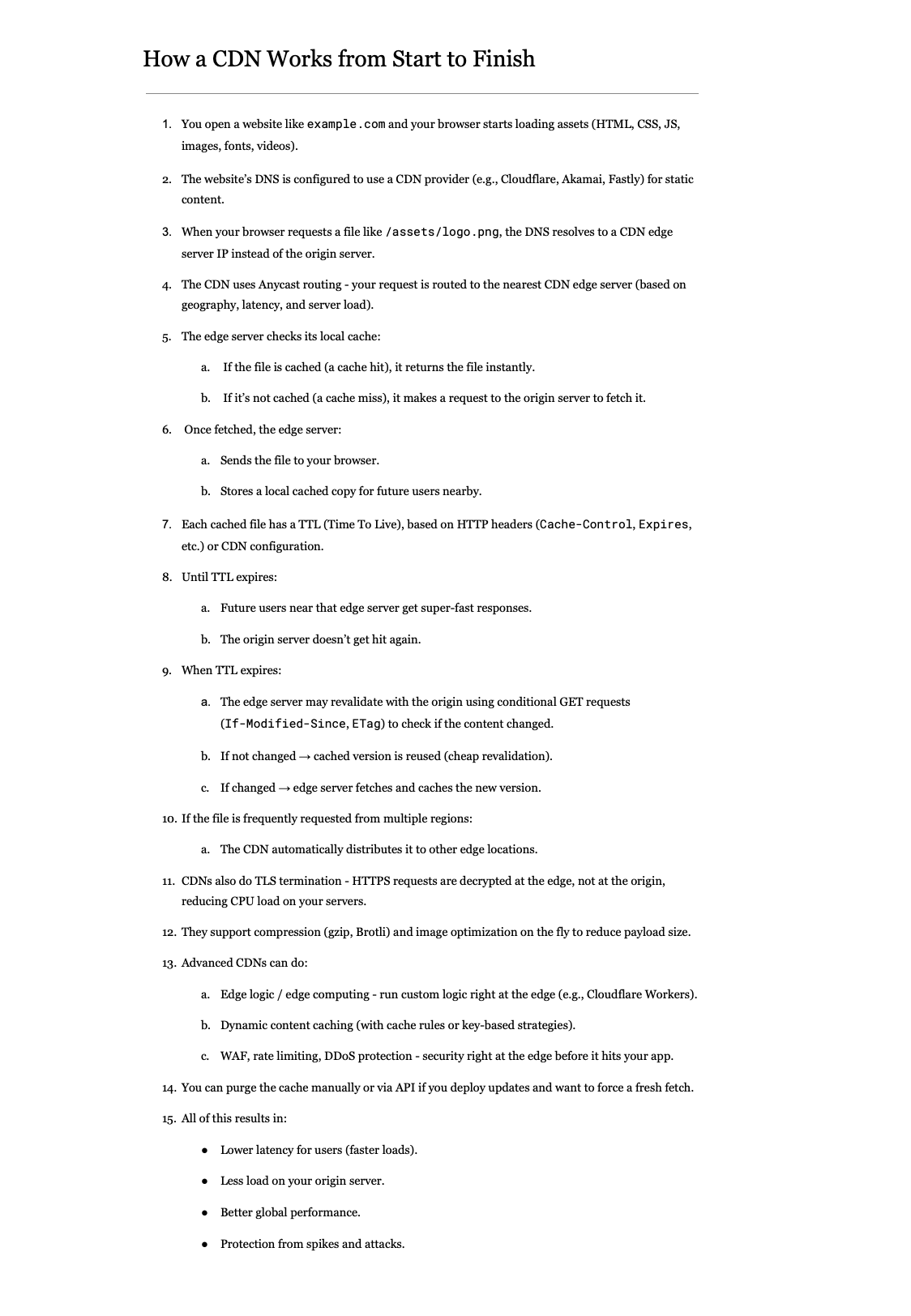
Introduction
A CDN (Content Delivery Network) is a network of servers that are distributed in multiple locations around the world. Its main purpose is to serve content to end-users with high availability and high performance. The idea behind a CDN is to bring content closer to the user, reducing the latency and improving the user experience.
CDN works by caching the content (such as images, videos, and HTML pages) on multiple servers, located at various points of presence (PoPs) around the world. When a user requests content, the CDN routes the request to the nearest server, which delivers the cached content to the user. This reduces the time it takes to deliver the content, improving the response time and the overall performance.
There are many benefits of using a CDN, including:
- Improved User Experience: CDN speeds up the delivery of content, resulting in faster page load times, reducing latency and improving the overall user experience.
- Increased Scalability: CDN can handle large amounts of traffic, reducing the load on the origin server and allowing for better scalability during periods of high traffic.
- Improved Security: CDN provides a layer of security for the origin server by filtering out malicious traffic, mitigating DDoS attacks and protecting the origin server from unwanted access.
- Global Reach: CDN can deliver content to users from anywhere in the world, improving the availability and performance of the content for global audiences.
- Cost Effective: CDN eliminates the need for expensive hardware and software investments, reducing the cost of delivering high-quality content to end-users.
In conclusion, a CDN is a crucial component in delivering high-quality content to users. By improving the performance, security, scalability, and availability of content, CDN helps organizations deliver a better user experience, while reducing costs and increasing efficiency.
What is CDN POP?
A CDN Point of Presence (POP) location is a strategically placed data center within the Content Delivery Network. These POPs are distributed globally, allowing content to be cached closer to end users. When a user requests content, the CDN delivers it from the nearest POP location rather than the origin server, reducing latency and improving performance. This setup enhances the speed and reliability of content delivery for websites, applications, videos, and other digital content worldwide.
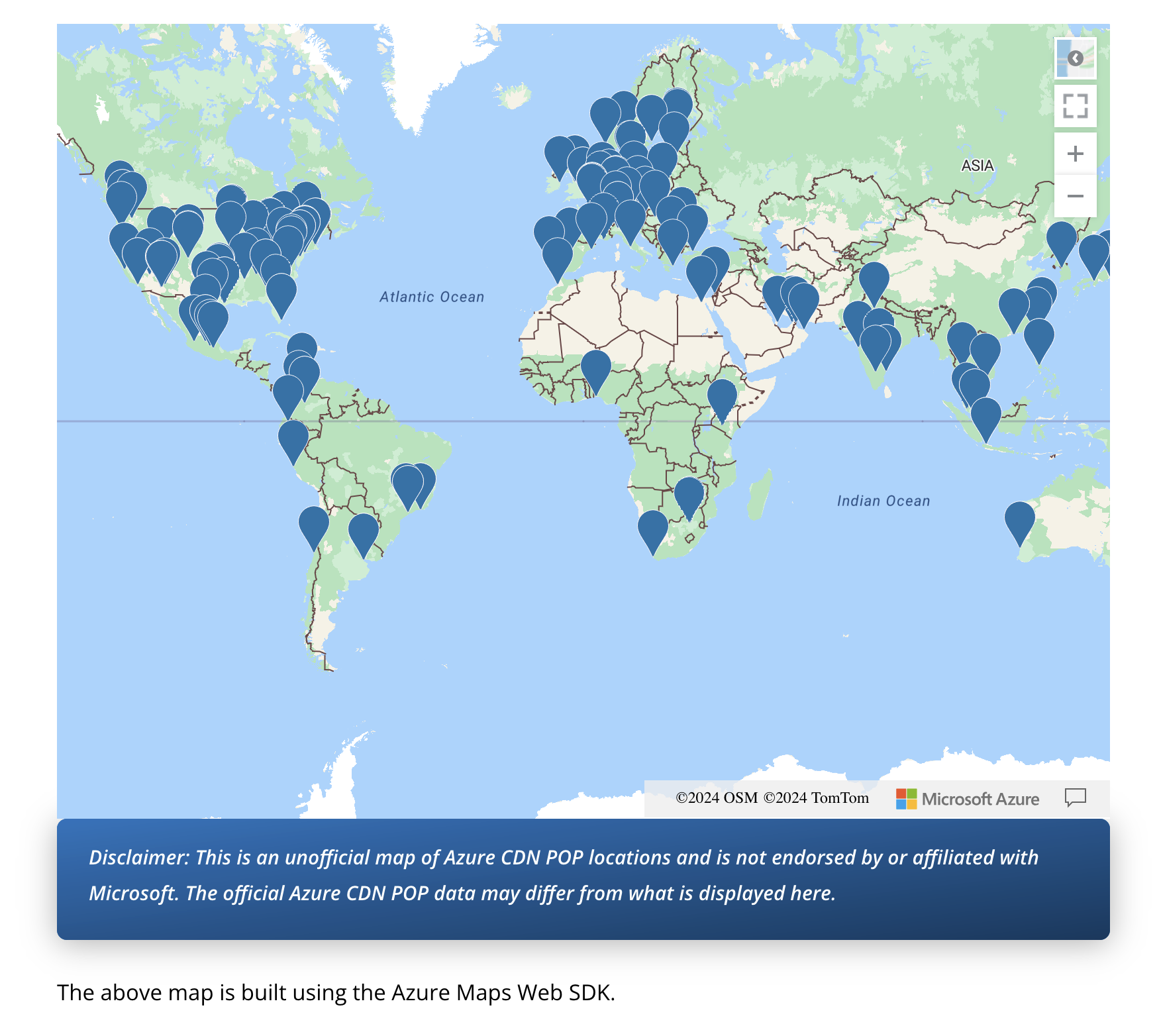
CDN Traffic Ingress
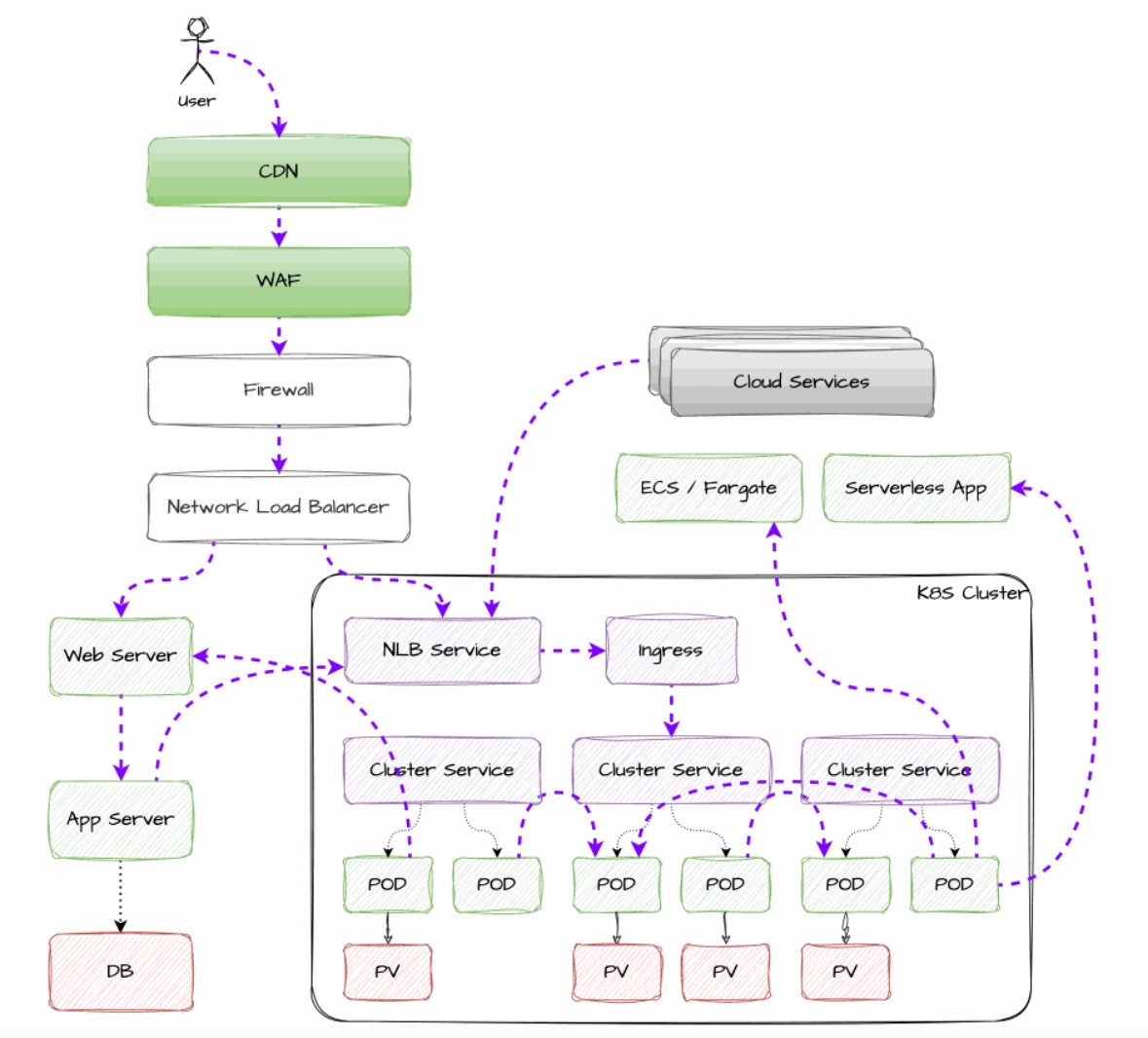
Important Metrics of CDN
For AWS CloudFront, the report includes the following values:
- Requests: The total number of requests for all HTTP status codes (for example, 200, 404, and so on) and all methods (for example, GET, HEAD, POST, and so on) during the time period.
- BytesDownloaded: The number of bytes that viewers downloaded for the specified distribution during the time period.
- BytesUploaded: The number of bytes that viewers uploaded for the specified distribution during the time period.
- TotalErrorRatePct: The percentage of requests for which the HTTP status code was a 4xx or 5xx error for the specified distribution during the time period.
- 4xxErrorRatePct: The percentage of requests for which the HTTP status code was a 4xx error for the specified distribution during the time period.
- 5xxErrorRatePct: The percentage of requests for which the HTTP status code was a 5xx error for the specified distribution during the time period.
- OriginLatency: The total time spent, in milliseconds, from when CloudFront received a request to when it started providing a response to the network (not the viewer), for requests that were served from the origin, not the CloudFront cache. This is also known as first byte latency, or time-to-first-byte.
- CacheHitRate: The percentage of all cacheable requests for which CloudFront served the content from its cache. HTTP POST and PUT requests, and errors, are not considered cacheable requests.
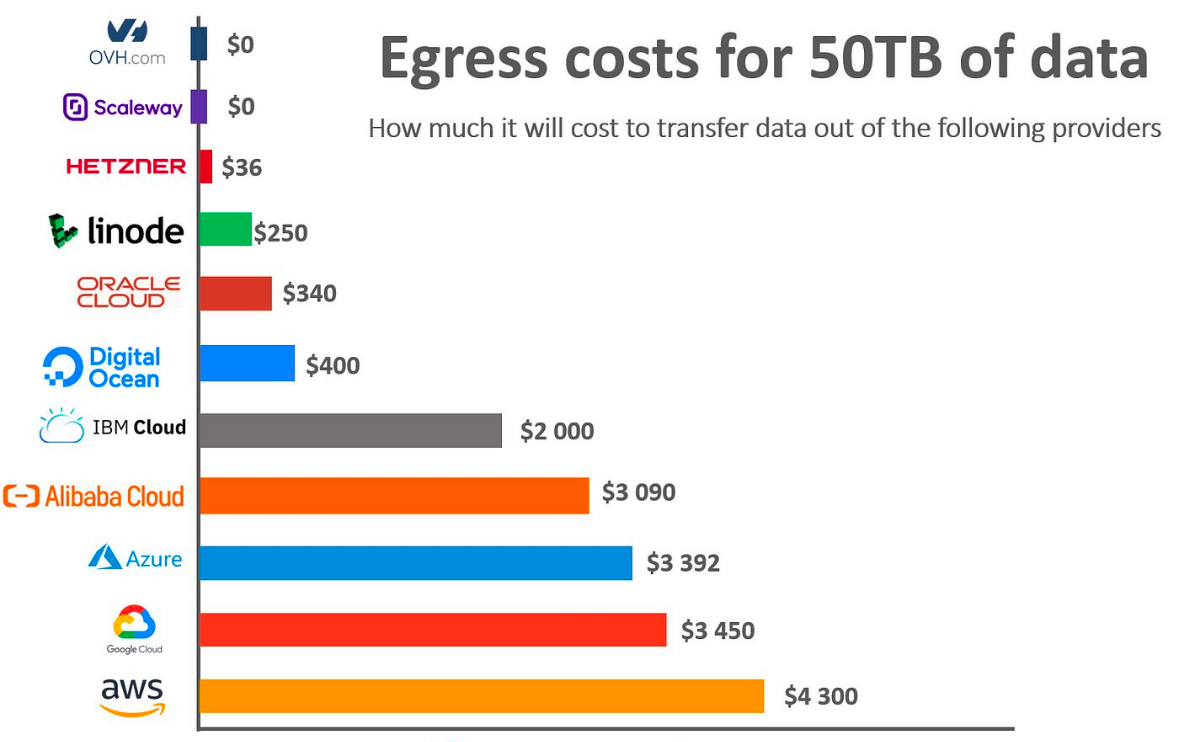
CDN Providers
1. Cloudflare
Cloudflare is one of the most popular CDN providers and offers a range of features, including DDoS protection, SSL encryption, and a web application firewall. They also have a free plan that includes basic CDN features and is suitable for small websites.
2. Akamai
Akamai is another well-known CDN provider that offers a range of features, including DDoS protection, SSL encryption, and load balancing. They are known for their high level of security and scalability, making them a popular choice for large websites and enterprises.
3. Amazon CloudFront
Amazon CloudFront is a CDN service offered by Amazon Web Services (AWS) and is known for its scalability and integration with other AWS services. They also offer a range of features, including DDoS protection, SSL encryption, and content compression.
4. Fastly
Fastly is a newer CDN provider that has gained popularity in recent years due to its advanced features and real-time analytics. They offer features such as instant purging and edge computing, which can help to improve website speed and performance.
5. Azure CDN
Azure Content Delivery Network provides a global solution for quickly delivering content. It helps save bandwidth and improve responsiveness when encoding or distributing gaming software, firmware updates, and IoT endpoints. By reducing load times for websites, mobile apps, and streaming media, it enhances user satisfaction on a global scale.
6. Key CDN
KeyCDN is a registered trademark and service of proinity LLC, a privately funded company headquartered in Switzerland. We are a leading European CDN provider that has built a next-generation content delivery architecture from the ground up. Our mission is to develop and engineer a content delivery solution that is accessible to as many people as possible. KeyCDN is not based on a federated CDN or any other form of reselling.
7. CacheFly
A leader in CDN technology, CacheFly has held a track record for high-performing, ultra-reliable content delivery for two decades – longer than nearly every other CDN globally. We pioneered the use of TCP Anycast in 2002, an innovation that upstart CDNs continue to build upon. With more than 5,000 clients in nearly 100 countries, organizations consistently choose CacheFly for scalability, reliability, and unrivaled performance.
Reference
https://blog.bytebytego.com/p/how-does-cdn-workhttps://www.akamai.com/glossary/what-is-a-cdnhttps://aws.amazon.com/what-is/cdn/https://www.cloudflare.com/learning/cdn/what-is-a-cdn/https://www.imperva.com/learn/performance/what-is-cdn-how-it-works/https://techdocs.akamai.com/reporting/reference/apihttps://docs.aws.amazon.com/AmazonCloudFront/latest/DeveloperGuide/cloudwatch-csv.htmlhttps://www.streamingmediablog.com/2024/07/cdn-market-size.htmlhttps://bigdataanalyticsnews.com/boost-app-performance-choosing-right-cdn-provider/https://www.datacenterknowledge.com/networks/cdn-vs-data-center-making-right-choice-improve-network-performancehttps://blog.bytebytego.com/p/a-crash-course-on-content-deliveryhttps://levelup.gitconnected.com/integrating-azure-blob-storage-with-net9-and-utilizing-azure-cdn-3910b70b44aehttps://www.c-sharpcorner.com/article/alibaba-cloud-cdn-enhancing-web-performance-globally/https://speakerdeck.com/remore/turning-cdn-edge-into-a-rack-web-server-with-ruby-dot-wasmhttps://build5nines.com/azure-cdn-endpoint-interactive-map/https://www.howtouselinux.com/post/resolve-lcp-issue-with-cdn-my-experience-of-website-performance-improvementhttps://www.digitalocean.com/blog/spaces-cdn-expansionhttps://www.medianova.com/what-is-a-pop-and-how-do-we-create-one/https://www.cachefly.com/news/why-points-of-presence-pops-are-pivotal-for-optimal-cdn-performance/https://learn.microsoft.com/en-us/azure/cdn/cdn-pop-locationshttps://www.alibabacloud.com/help/en/cdn/product-overview/pop-distributionhttps://www.keycdn.com/what-is-a-cdnhttps://www.cdnetworks.com/global-network-map/https://openobserve.ai/blog/monitor-cloudfront-access-logs-kinesis-streams-amazon-data-firehose-guide/https://www.cloudflare.com/https://www.fastly.com/https://www.akamai.com/https://aws.amazon.com/cloudfront/https://azure.microsoft.com/en-us/products/cdnhttps://cloud.google.com/cdnhttps://www.cachefly.comhttps://www.techradar.com/news/best-cdn-providershttps://www.cdnplanet.com/cdns-by-continent/asia-cdn/https://www.gartner.com/reviews/market/edge-distribution-platformshttps://wpforms.com/best-cdn-providers/